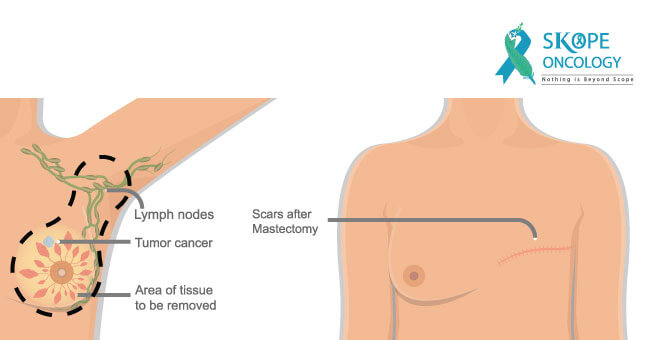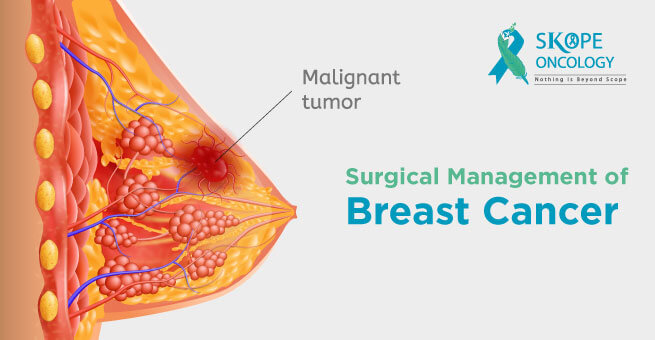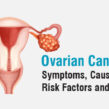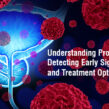Breast cancer is a type of cancer that occurs in the cells of the breast gland and is the most common cancer amongst women over the age of 50, but it may also occur in the younger generation. This cancer typically forms in the ducts or lobules of the breast. If breast cancer is diagnosed at an early stage, there is a high chance of a cure. The more advanced the cancer, there is less chance that treatment may be curative.
Most women who are suffering from breast cancer have some form of surgery included as part of their treatment plan. Depending on the situation, breast cancer surgery may be performed for the below mentioned reasons:
- To remove the cancer as much as possible (breast-conserving surgery or mastectomy)
- To detect the cancer spread to lymph nodes under the arm (sentinel lymph node biopsy or axillary lymph node dissection)
- To restore the shape of the breast after the removal of cancer (breast reconstruction/oncoplastic breast surgery)
- To relieve symptoms of advanced cancer such as ulceration or bleeding
2. What are the surgical treatment options available for breast cancer?
3. Breast-Conserving Surgery or Mastectomy: What to choose?
4. What is the surgical removal procedure of nearby lymph nodes?
5. What is breast reconstruction after surgery?
6. What are the possible risks after surgery?
7. Chemotherapy in breast cancer
8. Radiation therapy after surgery
9. References
Why is surgical management of breast cancer done?
The purpose of breast cancer surgery is to remove cancer lump from the breast. A procedure for inserting breast implants or reconstructing a breast from the patient’s own tissue (flap surgery) can be performed at the same time or later for those who prefer breast reconstruction.
What are the surgical treatment options available for Breast Cancer?
There are two main types of surgery to remove breast cancer:
- Breast-Conserving Surgery (BCS) also referred to as a lumpectomy, partial mastectomy, wide focal excision or segmental mastectomy, quadrantectomy, is a procedure which is performed to remove the part of the breast containing the cancer.
- Mastectomy is a surgery that requires removal of the entire breast including all of the breast tissue and sometimes other tissues in the vicinity. There are various forms of mastectomy. Some of the women can also have double mastectomy, in which both the breasts are removed.

Breast-Conserving Surgery or Mastectomy: What to choose?
Most women with early-stage cancers have the option to choose between BCS and mastectomy. The significant advantage of BCS is that a woman can continue to have most of her breast, since only the part of the tissue with cancer cells will be removed. But she will need to continue radiation in most cases.
Women who undergo mastectomy are less likely to get chemotherapy for early stage cancers. Mastectomy can be a better and safer option for many women especially elderly because they can avoid radiation. In younger women, breast conservation is advisable whenever the stage and size of the tumour permits.
What is the surgical removal procedure of nearby lymph nodes?
To assess the spread of breast cancer to axillary lymph nodes, one or more of these lymph nodes are removed and observed in a laboratory by the pathologist.
There are two main types of surgery to remove lymph nodes including:
- Sentinel Lymph Node Biopsy (SLNB): In this procedure, the surgeon removes only the lymph nodes under the arm where the cancer will possibly spread first. Removing only one or more lymph nodes decreases the risk of surgical side-effects such as swelling of the arm, also known as lymphedema.
Axillary Lymph Node Dissection (ALND): In this procedure, the surgeon removes many axillary lymph nodes (usually less than 20). ALND is not used much, but it can still be the best way to remove the lymph nodes in situations where the lymph nodes are enlarged.
What is breast reconstruction after surgery?
Many women who have breast cancer surgery, generally have the option of breast reconstruction. The option of breast reconstruction depends on the medical situation and personal preferences of the woman. The patient can opt for breast reconstruction at the same time as the surgery (immediate reconstruction) or later (delayed reconstruction).
A plastic surgeon who is trained in reconstruction surgery performs this kind of procedure. The surgeon uses an implant or tissue from another part of the body to create a breast-like shape that substitutes for the missing breast. The surgeon may even make a nipple outline and add a tattoo, which looks like the areola (the dark region around the nipple).

There are two main types of breast reconstruction surgery:
Breast implant: Breast reconstruction with an implant is performed in the steps mentioned below:
- The plastic surgeon places a balloon expander under the chest muscle, which is the first step in the procedure, also called tissue expansion.
- Saline is applied to the expander over weeks or months to stretch the chest muscle and the skin above it. This phase creates an implant pocket.
- When the pocket is the appropriate size, the surgeon removes the expander and inserts an implant in the pocket (filled with saline or silicone gel). This creates a new breast-like shape.
- Although it looks like a breast, but nerves were cut during the mastectomy, you will not have the same feeling as before.
Tissue flap: A reconstructive plastic surgeon with special training performs this surgery. He creates a new breast-like shape from the muscle, fat, and skin taken from other parts of the body (usually the belly or back) in tissue flap surgery. Women who are extremely underweight or obese, who smoke or who have severe health issues cannot undergo tissue flap surgery.
What are the possible risks after surgery?
Breast cancer surgery is one of the safest surgeries, but it may sometimes carry few possible risks or complications, including:
- Bleeding
- Pain in the area of surgery performed
- Permanent scarring
- Arm swelling (lymphedema)
- Infection
- Wound healing problems
- Collection of fluid at the operative site (seroma)
- Loss of or altered sensation in the chest and reconstructed breasts
- Anesthesia related risks that may put a patient in a sleep-like state during surgery, such as confusion, muscle aches and vomiting
Chemotherapy in breast cancer
Depending on the stage of the cancer, chemotherapy is given either before surgery (Neoadjuvant) or after the surgery (Adjuvant). Sometimes chemotherapy is given only with palliative intent. The number of chemo cycles vary depending on the pathology reports, stage and receptor study results.
Radiation therapy after surgery
Many women who undergo a lumpectomy or breast conservation will have radiation treatment for the breast following surgery. Likewise, some women who are under treatment for mastectomy may have radiation therapy for the chest along with the lower neck and underarm area. Radiation therapy is given after chemotherapy, if the treatment plan includes chemotherapy.
References:
- Breast cancer surgery, Mayo Clinic, https://www.mayoclinic.org/tests-procedures/breast-cancer-surgery/about/pac-20385255, Accessed on 1st Jan.
- Surgical Treatment of Breast Cancer, Medscape, https://emedicine.medscape.com/article/1276001-overview, Accessed on 1st Jan.
- Surgery for Breast Cancer, American Cancer Society, https://www.cancer.org/cancer/breast-cancer/treatment/surgery-for-breast-cancer.html, Accessed on 2nd Jan.





